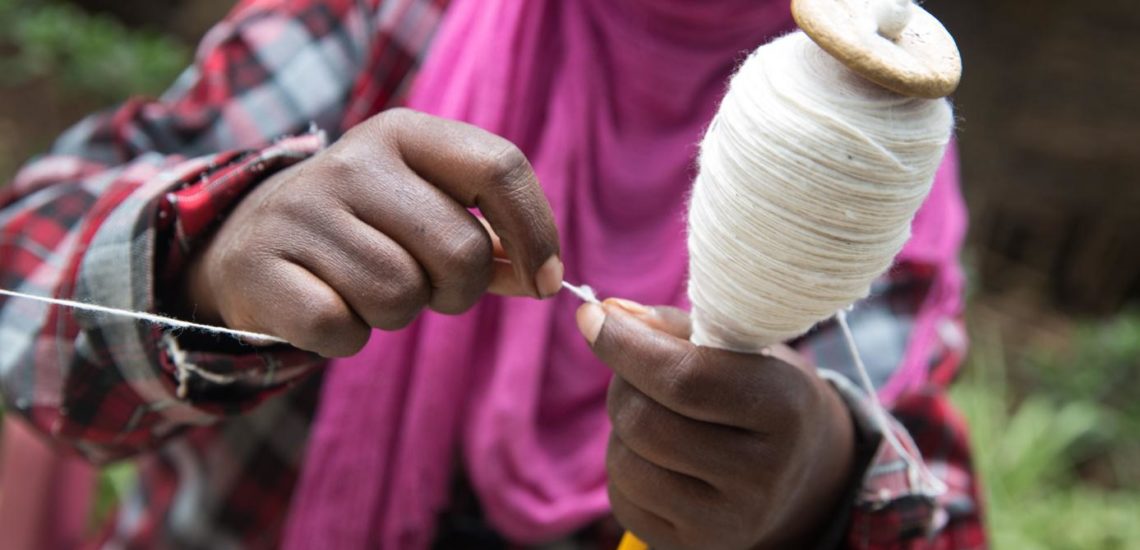Cotton is deeply rooted in Ethiopian culture as its production in the country dates back millennia. Traditional methods of handspinning cotton and then handweaving into cloth has been the livelihood of both rural and urban artisans and the techniques have been preserved even in the modern textile industry. The cotton itself is grown on both large, government-owned farms and small privately-owned farms alike and is a major cornerstone of Ethiopia’s economy.
Handspinning cotton has been preserved for centuries despite the introduction of textile factories and machines. From raw cotton, the fiber is separated from the seed and then spun on a drop spindle into a uniquely soft thread. So, why handspun? The beauty of soft yet textured material is only achieved through handspun cotton, which creates intricate idiosyncrasies that make each product a one-of-a-kind piece. The skill is passed down from mother to daughter and is often spun in the home as a means of supplemental income.

Handweaving on the other hand is an art that is passed down from father to son. Nearly all weavers in Ethiopia are men. The handloom is operated by weavers pressing the pedals with their feet to move the loom up and down in a rhythmic spectacle to interweave the threads. And while handweaving techniques using a handloom have predominantly remained unchanged for centuries, the styles have become more and more sophisticated with new patterns, colors, and designs.
Habesha kemis is the traditional dress for Ethiopian women and is typically a white dress made from handspun and handwoven cotton. To accent the long white dresses, weavers have incorporated colorful jacquard designs made with silver or gold metallic threads--a design called tibeb--along the edges of the Habesha kemis. Other key pieces of traditional garments that are created through handspun and handwoven techniques include the gabi, kuta, and netela. The gabi is a heavy wrap featuring a thick cotton weave that is worn by both women and men to provide warmth in colder weather. The kuta and netela are thinner shawls that are worn in warmer weather--the kuta worn is worn by men while the netela is a larger piece worn over the traditional habesha kemis by women.
We are dedicated to supporting the craft and the artisans in Ethiopia that are preserving the century-old art of handspinning and handweaving cotton. By working directly with Ethiopian artisans and designers we hope to help preserve one of the enduring traditions that is at the heart of Ethiopian culture.



